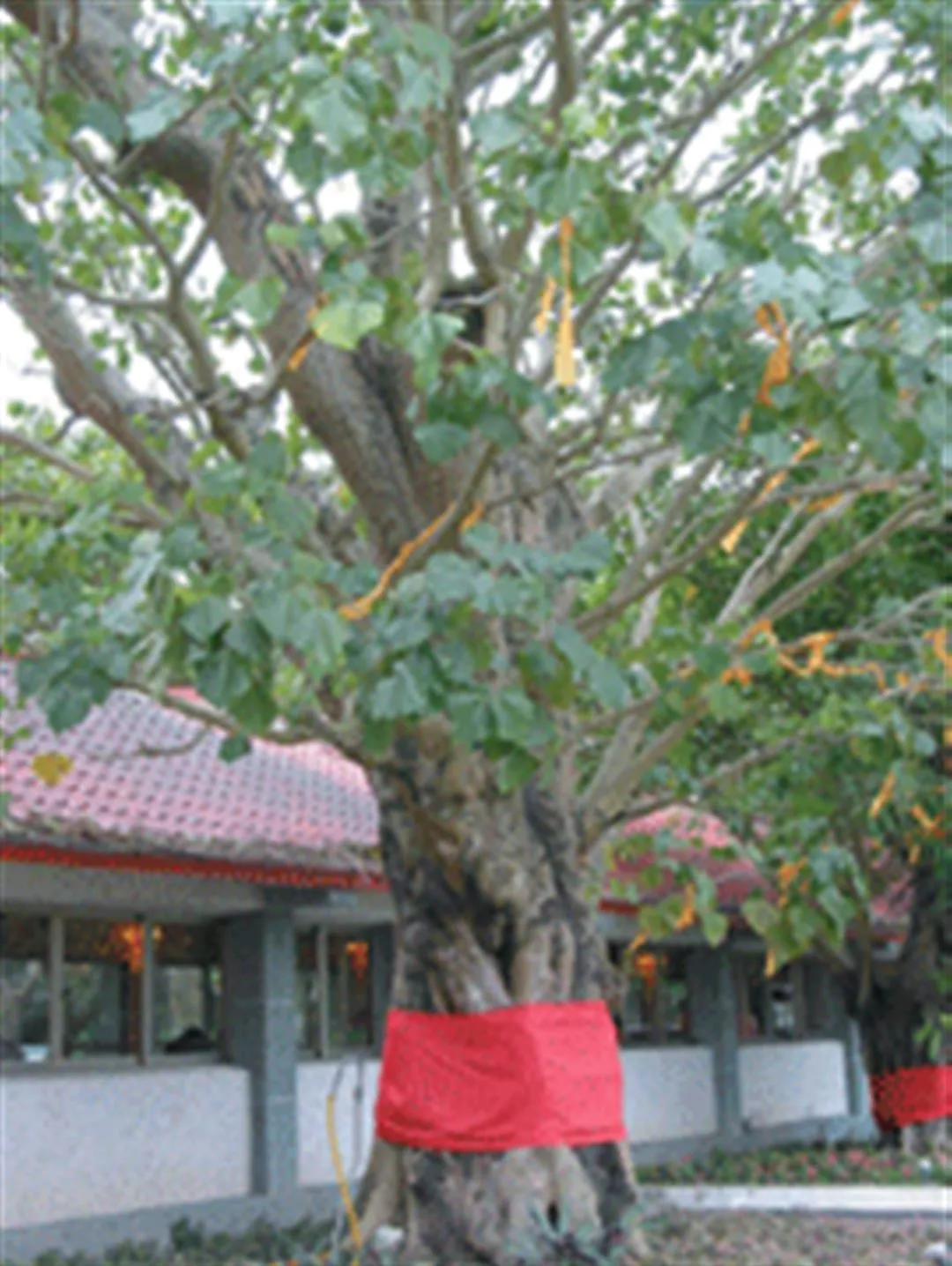A new home for old trees
For many decades, people have felt that nothing can be done to reconcile the opposing interests of the ecology and the economy. Fortunately, the "economic environmentalism" sought in recent years by Western nations attempts to create a balance between the two. In Taiwan, too, there was an admirable case of someone successfully transplanting a great number of old trees and thereby creating economic value, offering a rare shady garden of green and writing a moving new chapter in Taiwan's tree story.
Yiyuan Resort, in Hualien's Shoufeng Rural Township, is one of the few Taiwanese resorts with a 5-star hotel. Its spacious, forested grounds appeal to people through its trees. Of its nearly 3000 trees, eight or nine hundred have been transplanted. Whether they are perennial sweet osmanthus in Wulai in the north, or Autumn maple trees in Fangliao, Pingtung County, in the south, operator Chen Sheng-te actively saves them from the axe by seeking out newspaper reports of reconstruction or road-widening projects. Amazingly, the survival rate of trees transplanted by Chen is nearly 100%.
According to Chen, the reason that their survival rate is so high is the methods he uses. He says, "When people get sick they need IV drips, and when trees are injured, they, too, need to be drip-fed to be slowly nourished back to health. At Yiyuan, all transplanted trees are hooked up to a water source by hoses and leach pipes, and are irrigated top to bottom three times a day, morning, noon, and evening, to keep the water in the trunk's bark from evaporating away."
In addition to this, his methods include maintaining the tree's appearance. Chen points out that while transplantations to Taipei's Ta-an Forest Park and to Yiyuan were conducted at the same time, Yiyuan's trees are lusher. The difference? "People have their looks, and trees have their shapes." Usually leaves and branches are cut from trees before transplantation, but Chen believes that this should be avoided as much as possible so as to preserve their original appearances, and that trees will grow well only when cared for as if they were people.
Chen's background is in the animal farming industry. His fate became tied to trees one day over ten years ago while driving his Mercedes Benz along the Eastern Coastal Highway 11. At the time, the highway was being widened, and workers were preparing to cut down a 100-year-old tree at the roadside. As he passed by, Chen felt a pain well up in his heart, and thought to himself, "If I want to drive a Benz I only have to work hard for ten or 20 years to achieve it, but it's not easy to see a 100-year-old tree. Think of how long it takes to get a tree with branches and leaves like that, providing shade for later generations...."
He made an offer on the spot to take the tree away at his own expense. From that moment, his fate was inextricably bound up with trees, saving them near and far, new and old, from the cutter's axe at construction sites and road projects. Every discovery and rescue makes for a moving story.
Take, for instance, the 400-year-old banyan tree which, at around five stories high, is Yiyuan's biggest, tallest, and oldest tree. This "King of Trees" even has a lightning rod at its top. Its transplantation from a cliff in Fanshuliao on the east coast cost a record-setting NT$870,000, and required eastern Taiwan's two largest cranes and three excavators.
Interestingly, no matter how they tried, workers were unable to free the tree for transport. They finally made an offering with incense, telling the tree that because they were building a bridge they needed to move her to new location, but promised to take good care of her. Miraculously, the operation started going smoothly as soon as these words were spoken. However, due to the tree's enormous size, it took workers 12 hours to transport it a distance that would usually take 30-50 minutes.
Also on the Yiyuan grounds is a shaded road lined on both sides by 66 banyan trees whose branches intertwine to form a verdant tunnel. These trees were originally planted on the grounds of an airforce base in Hualien, and were cut down during a project to widen the base's drainage ditches. When Chen got news of this, they had already been lying on the ground as if they were "garbage" for around a week, their leaves yellow. He offered to take them from the base free of charge. Even though the trees were awaiting disposal, the base in the end asked for NT$3000 per tree or NT$180,000 for all 66. Despite this, Chen felt that the trees were priceless and agreed without a second thought.
Soon after, seeing that his farm with its 200,000 chickens, 80,000 ducks, and more than 5000 pigs would be uncompetitive after Taiwan joined the WTO, Chen turned it into the famously forested Yiyuan Resort. People have also called it in fun "The Old Tree Rescue Center" and "The Homeless Tree Shelter."

Trees are the leading attraction of Hualien's Yiyuan Resort. Many have been rescued from other locations and lovingly nursed back to health.